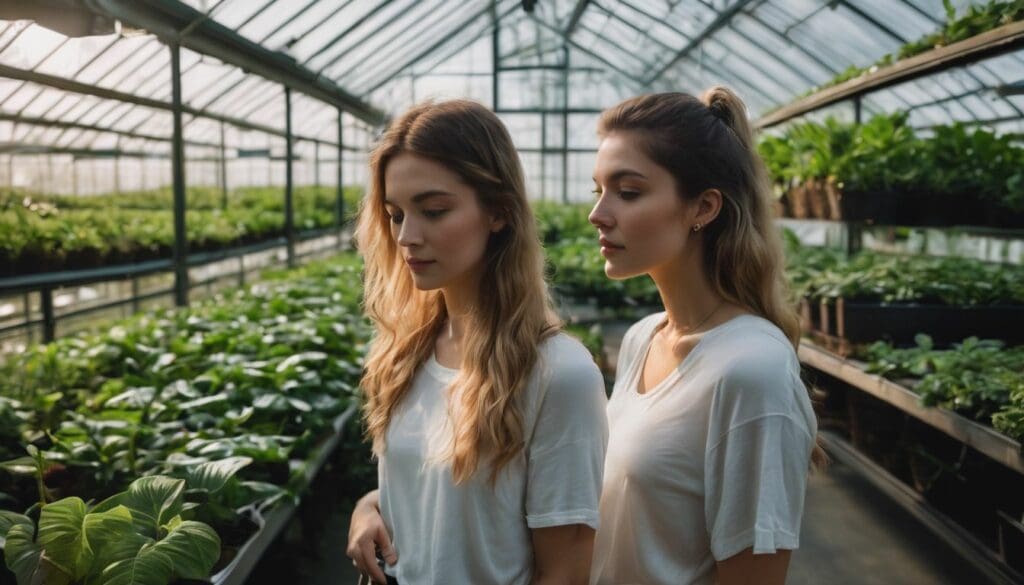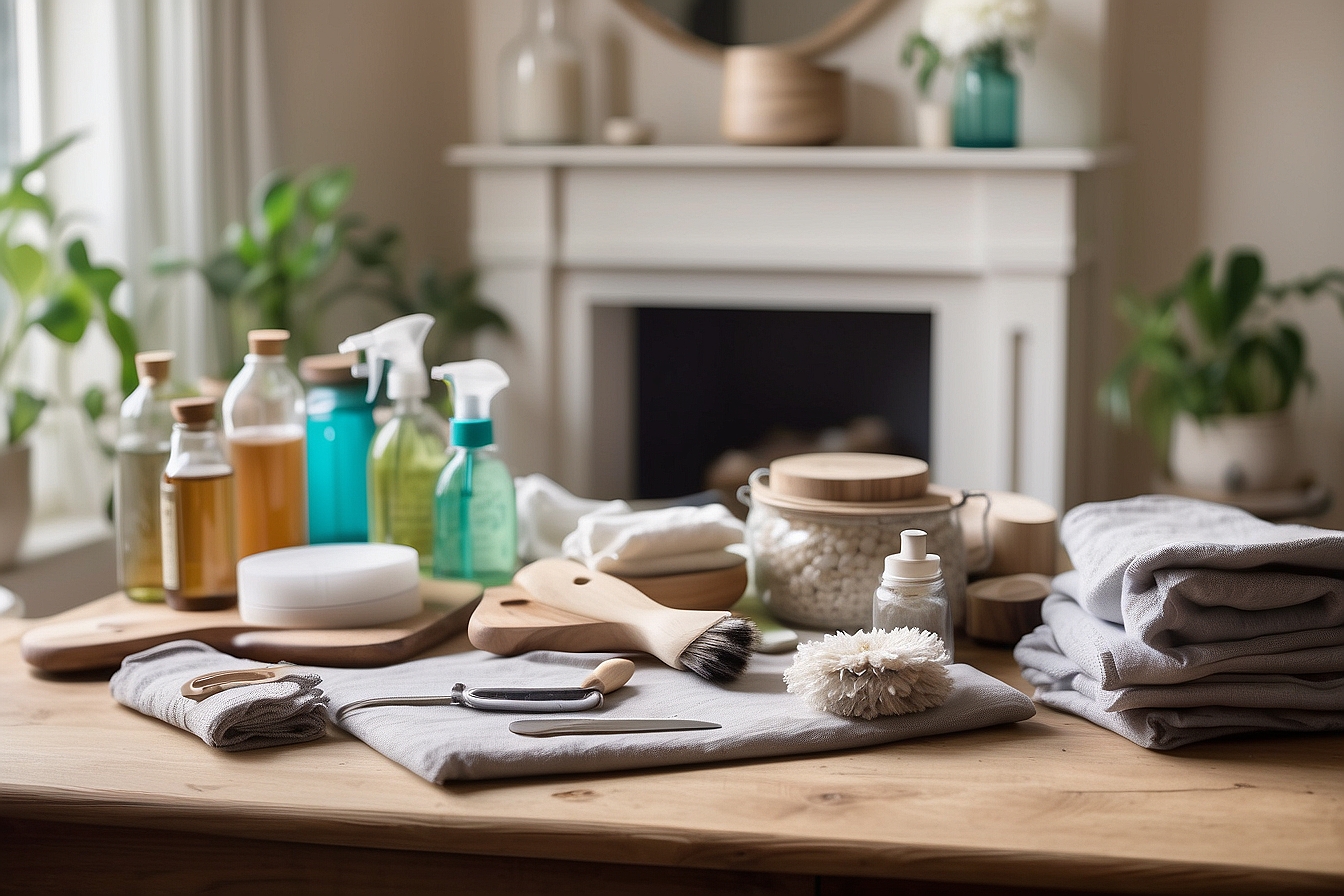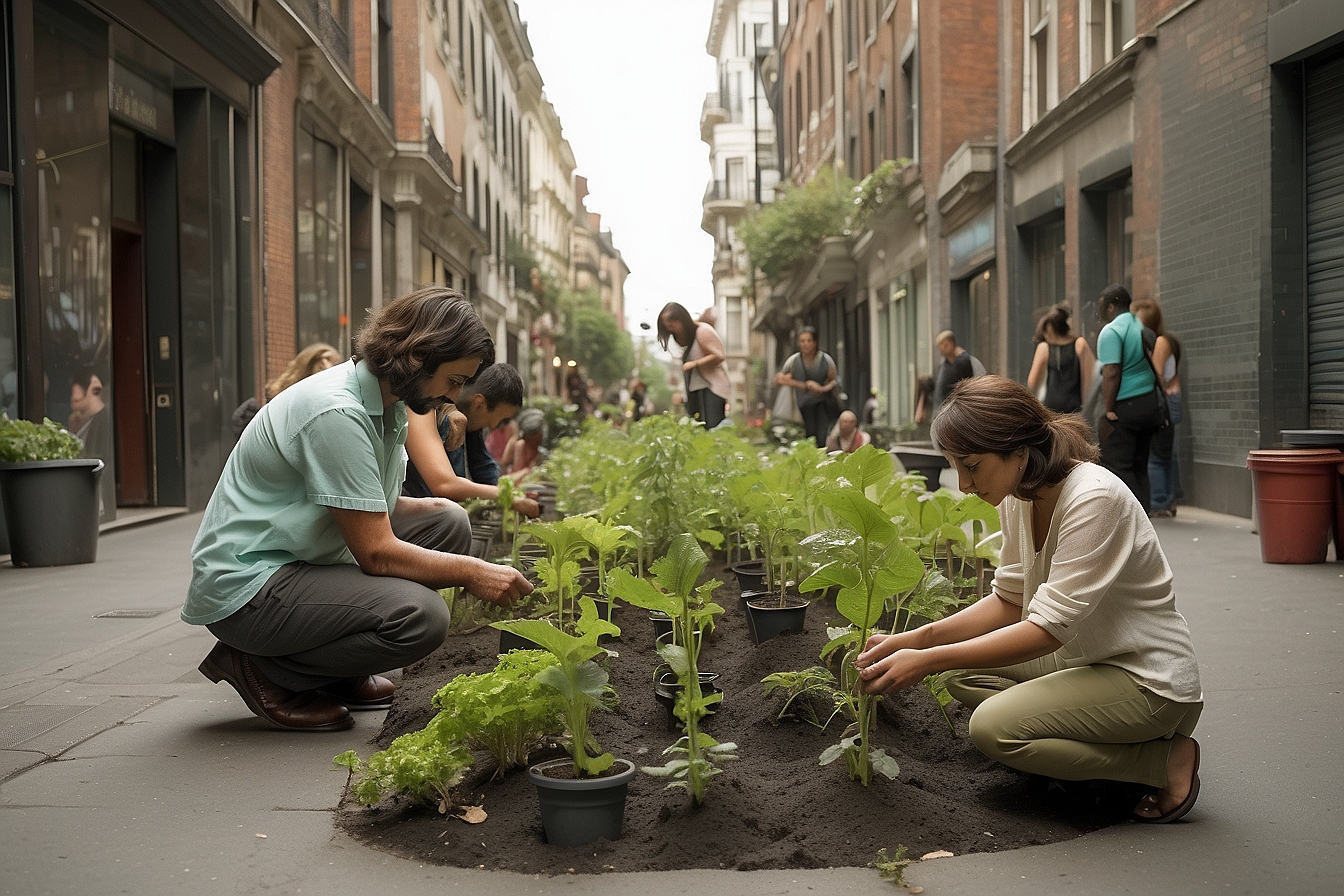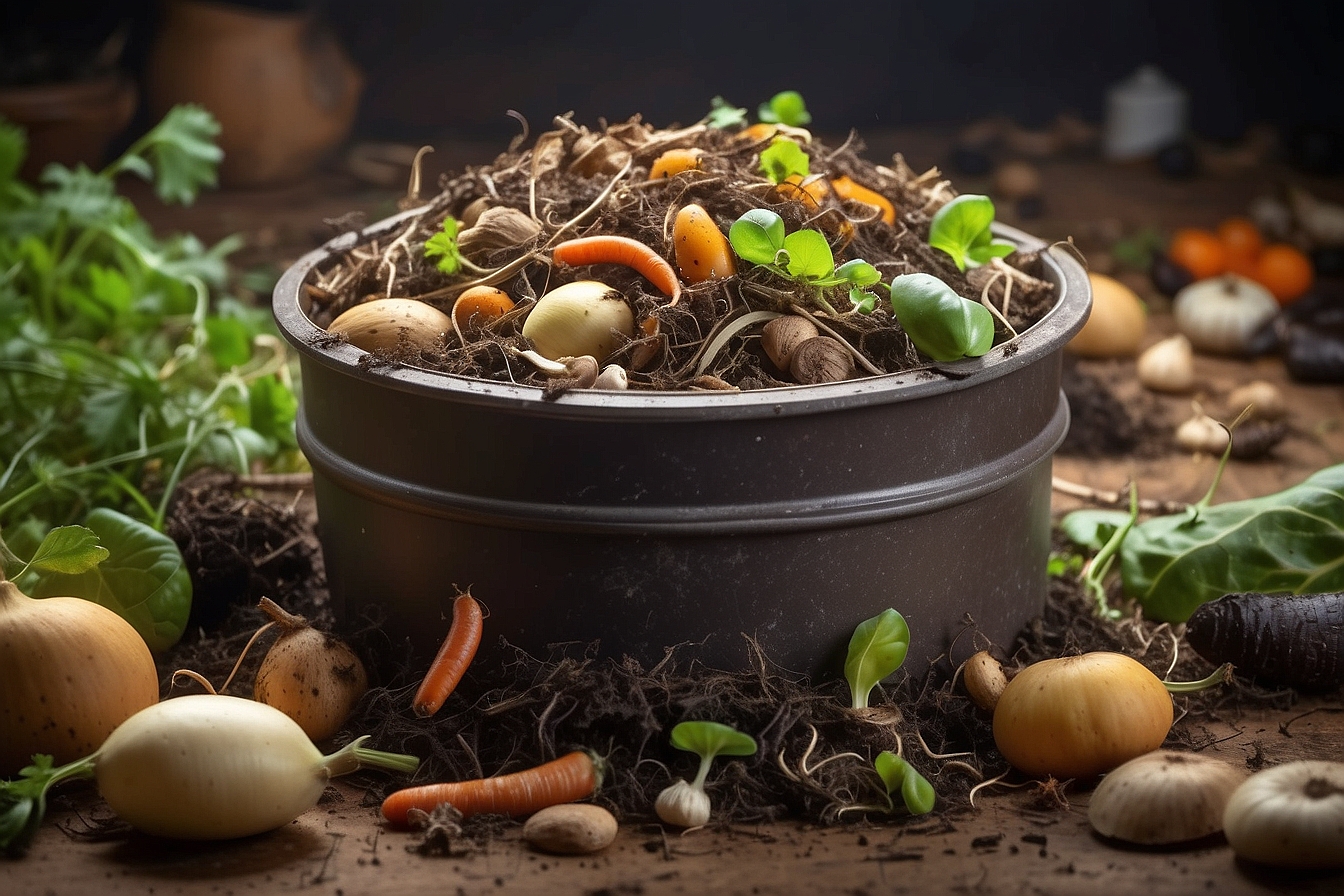Ever fancied the idea of tending to your very own verdant garden at any time of year, without giving a second thought to the whims of the British weather? You’re not alone in this.
The solution that has transformed our gardening endeavours is none other than a splendid greenhouse. Considering that a staggering 30% of our food relies on pollinators, it’s absolutely vital we offer these little helpers a sanctuary – and what better place than within the cosy confines of a greenhouse? In our thorough guide, we’ll share with you a host of savvy tips and clever tricks to help you cultivate your idyllic greenhouse paradise.
So, stay tuned – we’re about to embark on an exciting journey where things are bound to flourish!
Key Takeaways
- Select the right type of greenhouse for your space and needs, with standalone versions suited for large areas and lean-to structures ideal for smaller gardens.
- Choose a location that gets plenty of sunlight, has good drainage, and is protected from harsh winds; ensure it’s close to water and power sources if needed.
- Use sustainable building materials like recycled plastic or reclaimed timber to contribute to an eco-friendly environment; also consider durability and maintenance requirements.
- Implement effective heat management using insulation, shading materials, ventilation systems, as well as thermal mass such as water barrels or stone beds.
- Manage water in the greenhouse by installing drip irrigation systems, utilising rainwater harvesting methods, and monitoring soil moisture with tools like hygrometers.
Types of Greenhouses
When it comes to building a greenhouse, there are various types to consider. Standalone greenhouses are perfect for those with ample space, while attached lean-to greenhouses are great for smaller areas or urban gardens.
Each type has its own advantages and considerations, so it’s important to choose the right one for your needs.
Standalone
Standalone greenhouses offer great flexibility in greenhouse gardening. We can place them anywhere on our property that gets enough sunlight, making sure they’re properly oriented to catch the optimal rays.
These structures are independent of other buildings, which means we don’t have to worry about matching architecture or causing potential damage to existing walls and roofs.
We need to consider access to water and power sources when selecting a spot for our standalone greenhouse construction. It’s also essential that we prepare a solid foundation, whether that be concrete or packed soil, ensuring stability for years of sustainable cultivation and organic farming.
Next up is the Attached Lean-To option – let’s explore how this type dovetails with existing structures!
Attached Lean-To
When considering building a greenhouse, an attached lean-to is a popular option for homeowners with limited space. It allows the structure to be directly connected to an existing building, such as your house or garage.
This not only maximises the use of space but also provides easy access to utilities and other resources. Additionally, an attached lean-to can make better use of solar gain from the existing building, aiding in energy efficiency and reducing heating costs during colder months.
Constructing an attached lean-to greenhouse offers several benefits, including protection from wind and extreme weather conditions due to its attachment to a sturdy structure. The shared wall between your home and the greenhouse can provide thermal mass that helps regulate temperature fluctuations inside the greenhouse.
Location is Key
Choosing the right location for your greenhouse is crucial for its success. Ensure that it receives plenty of sunlight, ideally facing south to maximise sun exposure. Additionally, consider wind patterns and nearby structures that could provide shade or block airflow.
It’s important to select a spot with good drainage to prevent water from pooling around the greenhouse base, which can lead to mould and rot.
When planning the location, take into account proximity to water sources and electricity if needed for climate control systems. Remember that accessibility is essential for regular maintenance and care of your plants within the greenhouse.
Lastly, be mindful of local regulations and zoning laws regarding building in certain areas, ensuring compliance before installing your greenhouse.
Choosing the Right Materials
When selecting materials for your greenhouse, consider using sustainable options like recycled plastic or reclaimed timber. These materials are not only environmentally friendly but also durable and cost-effective.
Other important factors to consider include the insulation properties of the material, its ability to withstand outdoor conditions, and its compatibility with your climate control systems.
Ensuring that the materials you choose align with your environmental values will contribute to a more eco-friendly and sustainable greenhouse.
Additionally, prioritise selecting materials that require minimal maintenance while still providing adequate structural support for your greenhouse. By choosing long-lasting and low-maintenance materials, you can reduce the environmental impact associated with frequent replacements or repairs.
Sustainable choices in construction can lead to a greener approach to building and maintaining your greenhouse.
Now let’s move on to managing climate and conditions within your greenhouse.
Managing Climate and Conditions
We will discuss the importance of heat, water and air circulation in your greenhouse and offer tips to ensure optimal climate control for your plants. Read on to learn more about how to manage the conditions inside your greenhouse effectively.
Heat management
Maintaining an optimal temperature in your greenhouse is crucial for the well-being of your plants. Here are some tips and tricks for effective heat management:
- Install proper insulation to regulate the internal temperature.
- Use shading materials to control excess sunlight and heat.
- Consider incorporating a ventilation system to prevent overheating.
- Choose heat – retaining flooring materials to stabilise temperatures during cooler periods.
- Utilise thermal mass such as water barrels or stone beds to store and release heat gradually.
- Employ automatic climate control systems for precise management of temperature fluctuations.
Water management
- Install a drip irrigation system to provide consistent and controlled water supply to plants.
- Utilise rainwater harvesting techniques to collect and store rainwater for greenhouse use.
- Implement mulching around plants to retain soil moisture and reduce water evaporation.
- Monitor soil moisture levels regularly using a hygrometer to avoid over- or under-watering.
- Consider using porous materials for flooring to allow better drainage and prevent waterlogging.
- Use water – saving technologies such as automated watering systems and moisture sensors.
Air circulation
To ensure proper air circulation in your greenhouse, follow these tips:
- Install roof vents to allow hot air to escape and fresh air to enter.
- Use sidewall vents or louvers to facilitate cross ventilation and maintain consistent temperatures.
- Place fans strategically to promote airflow and prevent stagnant pockets of air.
- Avoid overcrowding plants to prevent air stagnation and allow for better airflow around each plant.
- Consider installing an automated climate control system to regulate airflow based on temperature and humidity levels.
Flooring options
When constructing a greenhouse, consider the following flooring options to create an optimal environment for your plants:
- Gravel:
- Provides good drainage and prevents waterlogging
- Allows easy access for maintenance and cleaning
- Concrete:
- Offers durability and stability
- Easy to clean and maintain
- Pavers or Bricks:
- Provides a stable surface for walking and working
- Allows for customisable patterns and designs
- Wood Chips:
- Creates a natural aesthetic
- Enhances soil insulation and moisture retention
- Rubber Mats:
- Offers cushioning for long hours of standing
- Provides non – slip surface for safety
- Soil or Earth:
- Facilitates direct planting in – ground
- Natural and eco – friendly option
- Combination of Materials:
- Blend different materials to achieve desired functionality and aesthetics
- Customise flooring based on specific needs and preferences
Other Factors to Consider
Permits and regulations, cost and budget considerations, DIY options, and the benefits of owning a greenhouse are all important factors to consider when building your own. These factors can impact the overall success and sustainability of your greenhouse project.
Permits and regulations
Before constructing a greenhouse, it’s crucial to familiarise ourselves with local permits and regulations. These vary depending on the area and must be adhered to in order to avoid fines or legal consequences.
By researching permit requirements and regulations beforehand, we can ensure that our greenhouse is compliant with local laws and zoning ordinances.
Understanding these permit processes will help us avoid unnecessary delays or setbacks when planning our greenhouse project. It is essential for all environmentally conscious individuals interested in building a sustainable structure to consider the legal aspects of construction and ensure compliance from the outset.
Cost and budget considerations
When planning your greenhouse, it’s essential to consider the costs of materials and ongoing maintenance. Take into account factors such as heating systems, ventilation, lighting, and water supply.
Researching cost-effective solutions for these elements can help keep expenses manageable while choosing durable and energy-efficient options that align with eco-friendly principles.
By carefully budgeting for construction materials and initial investments in sustainable technology, you can create an environmentally conscious greenhouse without breaking the bank.
Prioritising long-term savings through energy-efficient design features is key when considering the ongoing running costs of your greenhouse. Investing in quality insulation will reduce heating expenses during colder months while also ensuring optimal growing conditions for plants throughout the year.
DIY options
- Choose sustainable building materials such as reclaimed wood or recycled plastic for constructing the framework.
- Consider using salvaged windows or polycarbonate panels to allow natural light into your greenhouse.
- Install water butts to collect and store water for irrigation, reducing reliance on traditional water sources.
- Implement a composting system within or near the greenhouse to reduce waste and provide nutrient – rich soil for planting.
- Utilise passive solar design principles to maximise natural heating and minimise energy consumption.
- Explore vertical gardening techniques to optimise space and increase the yield of your greenhouse.
- Incorporate renewable energy sources, such as solar panels, to power lighting and climate control systems.
- Engage in upcycling by repurposing household items like containers and shelving for organising and nurturing plants.
Benefits of owning a greenhouse
Owning a greenhouse allows us to extend the growing season, providing fresh produce and flowers all year round. With control over temperature and humidity, we can cultivate a wider variety of plants, including tropical species that wouldn’t survive outdoors in our climate.
Additionally, we can grow organic fruits and vegetables without the use of harmful pesticides or chemicals, contributing to our sustainable lifestyle.
Furthermore, having a greenhouse provides protection from adverse weather conditions such as heavy rain, frost, or strong winds. This means less crop damage and fewer losses due to extreme weather events.
Ultimately, owning a greenhouse empowers us to take charge of our food supply and contribute positively to environmental conservation efforts by reducing food miles and carbon footprint through local production.
Conclusion
In conclusion, consider the unique benefits of a greenhouse. Ensure to understand local regulations before starting construction. Remember that proper positioning and climate management are crucial for successful greenhouse gardening.
Choose materials wisely and enjoy creating your own eco-friendly oasis.
FAQs
1. What should I consider when designing my greenhouse?
When planning your greenhouse design, factor in the positioning for maximum sun exposure, climate control systems for temperature regulation, and choose materials that cater to your horticultural needs.
2. Can you offer tips on how to maintain a healthy greenhouse environment?
Sure! Regularly check on your greenhouse maintenance by controlling the climate within, monitoring plant communities for health, and managing the eco-friendly use of resources for sustainability in agriculture.
3. What is important when selecting materials for building a greenhouse?
Selecting durable yet eco-friendly greenhouse building materials is key; they should withstand the elements whilst providing proper insulation and light penetration essential for plant growth.
4. How do DIY enthusiasts build their own greenhouses effectively?
DIY enthusiasts can follow a detailed greenhouse building guide with construction tips that emphasise efficient layout, sturdy structure, and effective maintenance strategies.
5. Are there any special planting tips to consider within my new greenhouse?
For your new STRUCTURE, it’s best to follow expert greenhouse gardening tips like choosing plants suited for enclosed spaces and understanding how to regulate temperature based on specific flora requirements.





